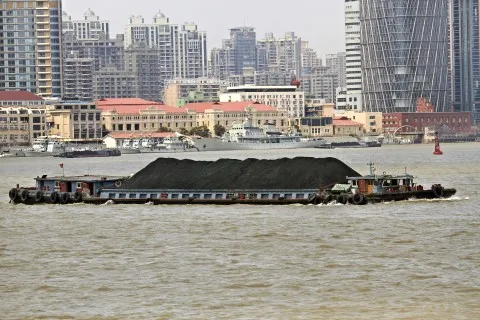
These are the coal kings of the world
And China is still among the giants who keep building.
Currently, over 1,600 new coal plants and units are planned or under development in 62 countries, according to a new research by Urgewald, an environmental group based in Berlin. If built, they would add over 840,000 MW to the global coal plant fleet.
The database Urgewald has published on the webpage coalexit.org identifies the top 120 companies responsible for 2/3 of the new coal power stations planned around the globe. All in all, these 120 companies aim to build over 550,000 MW of new coal power plants – this is about 2 ½ times India’s entire coal plant fleet.
Here's more from Urgewald:
In total, coal plant developers aim to build new plants in 14 countries, which presently have zero coal-fired capacity. And in 19 further countries increases of over 100% of coal-fired capacity are in the pipeline.
“In most of these countries, there is massive public resistance to these plans,” says Lidy Nacpil, coordinator of the Asian People’s Movement on Debt and Development (APMDD).Banks and investors need to blacklist companies that are driving ever new countries and regions into a destructive cycle of coal dependency.”
The world’s largest coal plant developer, India’s National Thermal Power Corporation (NTPC), is planning to build over 38,000 MW of new coal capacity in India and
Bangladesh.Next in line are the Chinese companies SPIC (31,587 MW), China Datang (28,945 MW), Shenhua (26,014 MW), China Huadian (25,810 MW), China Huaneng (20,750
MW) and China Guodian (17,250 MW). All in all, Chinese companies account for 45% of the projects in Urgewald’s database, but around 1/7 of these projects are located outside of China. “If the Chinese government truly wants to position itself as a global climate leader, it needs to rein in its state-owned companies that are flooding the world with new coal power plants,” says Trusha Reddy, Coordinator of the International Coal Network.Companies from other Asian countries such as South Korea and Japan also play a prominent role in the coal power pipeline. Japan’s Marubeni is the 26th largest coal plant developer worldwide and is involved in joint ventures totaling over 13,000 MW of new coal in 9 countries. Among these are many projects in ‘frontier’ countries like Botswana, Egypt, Mongolia and Myanmar.













 Advertise
Advertise











